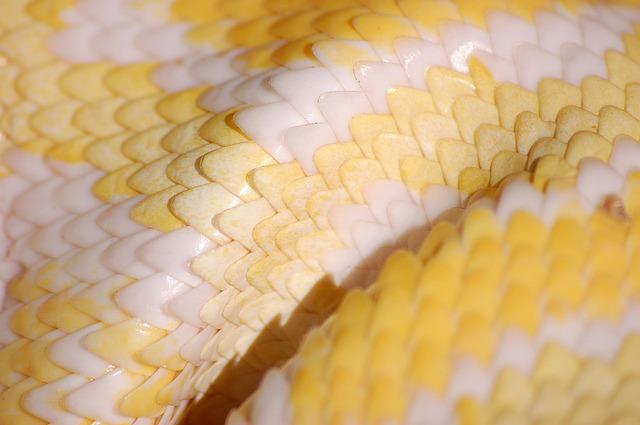See our services : Blockchain development service, Backbase Solutions
The Ultimate Guide to Dynamic NFT
Non-fungible tokens attracted a lot of attention from the tech community. Many NFTs have found many uses in mainstream domains, especially with celebrities coming up to their own NFT collections or projects. Despite the increasing hype surrounding NFTs, there has been a lot of interest in dynamic NFT examples.
The technology that underpins non-fungible tokens is constantly evolving has made it possible to introduce dynamic NFTs. The potential future of NFTs will be facilitated by dynamic NFTs. This is why there is a lot of interest in them. This post will give you an overview of dynamic NFTs and how they differ from static NFTs. You can also find examples and use cases for dynamic NFTs.
Are you interested in becoming a certified NFT expert? Register Now for Certified NFT Professional Course
What is NFT?
A brief explanation of NFTs would be the first thing to do in any tutorial on dynamic NFT. Non-fungible token, also known as NFT, is a digital asset that can be represented on a Blockchain. Each NFT is unique, and each token ID has a unique contract address. Non-fungible tokens allow for the attachment of data, files and links with the token metadata.
Non-fungible tokens can be used to represent physical and virtual assets. Noting that the token ID, metadata and other information are permanently registered after minting an NFT is completed. NFTs can therefore be considered inherently static by design. It is easy to see why dynamic NFTs are needed, given the many uses of NFTs.
What are Dynamic NFTs?
After reading the basics of NFTs, it is important to be curious about their uses and what dynamic NFTs are. The main concern would be to make NFTs “dynamic”. It is important to include the “dynamic” element in NFTs. This would be a focus on various use cases in which NFTs can react and respond to external conditions. A dynamic NFT makes it easier to make changes to the metadata of a token.
Applications of dynamic NFT/ DNFT can be thought of as being used in progression-based games with NFTs . In-game avatar NFTs save the skills and characteristics of avatars in the token metadata. As they progress through the game’s stages, players will need to upgrade their avatars. Dynamic NFTs can be used to help players keep their avatar’s unique identifier and allow them to modify or update the token metadata as needed.
The Global Awarded Magento POS – 2021 Stevie Awards Product Innovation winner provides you with a powerful Magento 2 POS extension as well as 24/7 support. Other products : Shopify Pos, Bigcommerce Pos, Woocommerce Pos
Do you want to learn more about non-fungible tokens? Join to get free access NFT Fundamentals Course.
The Difference Between Dynamic and Static NFTs
This basic definition of dynamic NFTs gives a good impression of their importance in the constantly changing world of NFTs. It is important to remember that dynamic NFTs compete with static ones. Each non-fungible token comes with its own set of benefits and disadvantages depending on the application. Understanding the differences between static and dynamic NFTs can help you decide whether dynamic NFT art uses are more reasonable than static NFTs. Will they lose credibility? These pointers could help you distinguish between dynamic and static NFTs.
Static NFTs can be described as digital assets that have permanent token data. They can offer greater security and trust but also allow for more flexibility. Dynamic NFTs, on the other hand offer the flexibility to change the token metadata. But dynamic NFTs are more vulnerable than static ones. Dynamic NFTs can be used in cases where data is frequently changed.
Dynamic NFTs
This diagram shows the main differences between dynamic NFT and static NFT. It also provides further insight into dynamic NFTs. Next, you should consider the operation of dynamic NFTs. A look at the answers to the question “How does a Dynamic NFT work?” will show you how non-fungible tokens are customizable for flexible modifications in token metadata. The smart contract is the core element that underpins dynamic NFTs’ operations.
Smart contracts are essential requirements to ensure changes in dynamic NFTs via on-chain and off-chain computation. Smart contracts will evaluate both on-chain and offline data in order to provide a response when a request is made for a dynamic NFT. The conditions in the smart contract determine the dynamic NFT changes. The following steps will help you learn more about dynamic NFTs.
- The smart contract is notified and begins processing the request for dynamic NFT.
- The smart contract then invokes on-chain data to evaluate the Blockchain information.
- The smart contract would then leverage an oracle to call off-chain data, and then process the offline information.
- Based on the evaluation of both on-chain and offline data, the smart contract will return a particular type of media.
Smart contracts are crucial for NFTs, as demonstrated by the workings of various dynamic NFT examples. Smart contracts can also determine whether an NFT should change and allow for modification of the token metadata. For accurate changes, dynamic NFT smart contract rely on both on-chain and off-chain data.
You can build your career as a blockchain expert by becoming a 101 Blockchains’ certified Blockchain Expert.
Application to Oracles in Dynamic Non-Focusable TFTs
Understanding dynamic NFTs works is primarily about metadata updates. You can also explore the possibilities of introducing dynamic features. Depending on certain conditions, DNFT applications may require the development of dynamic NFTs.
Dynamic NFTs can, for example, be created when secret locations are discovered in an augmented reality application. Dynamic NFTs may also contain many hidden features that can be made more obvious by frequent interaction. NFTs offer the benefit of uniqueness. Adding endless programming options could open up new avenues for dynamic tokens.
Dynamic NFTs are not dependent on on-chain data. Oracles assist dynamic NFTs with obtaining the necessary off-chain data to make NFT changes. Oracles provide the computing services necessary for dynamic NFT modifications and upgrades. Oracles can bridge the gap between smart contract and other web services. They also help make dynamic NFTs more automated and decentralized. Oracles can make dynamic NFTs more connected to the real world.
You want to see real-world smart contracts in action and learn how your business can benefit from them? View the presentation Examples of Smart Contracts
The Benefits of Dynamic Non-Ferrous Transmissions
Comparison between dynamic NFTs (static NFTs) and NFT art will show that dynamic NFTs represent the next step in NFT growth. Dynamic NFTs can be used in many other areas of the future blockchain, and the decentralized internet. The new type of NFTs combines non-fungible tokens and the flexibility to add dynamic data inputs. Dynamic NFTs offer more than flexibility. These are just a few of the many benefits that dynamic NFTs can offer.
-
Higher Engagement
A dynamic NFT collection has the greatest advantage: better engagement. Dynamic NFTs are a great way to get users’ curiosity about what the next changes will be in the collection. New challenges, corresponding rewards, and new ways to interact with the collection can all fuel user engagement.
-
Immersive experiences
The advantage of NFT projects that are dynamically non-fungible tokens is the ability to create immersive experiences. The users would be constantly looking for exciting and memorable experiences with dynamic NFTs. This encourages them to spend more time on a particular solution.
-
Loyalty
People can enjoy new ways of enjoying dynamic NFT collections by engaging with them constantly. Brands could use dynamic NFTs as a way to turn their customers into loyal fans. Users who engage with dynamic NFTs are more likely to spread the word about the project.
-
Flexible Monetization
Engaging more people with dynamic NFTs will open up new opportunities for monetization. DNFT collections could offer rewards or exclusive content, and payments can be made for them. The premium services are more appealing to users who spend more time on dynamic NFT sites or apps. They offer greater potential for monetization.
-
Power of Innovation
The greatest benefit of dynamic NFTs is the potential for innovation. Dynamic NFTs allow for flexibility and the possibility to develop new ways of creating and disseminating content. Examples of dynamic NFT collections also show the potential to tailor the projects to drive engagement. There are many options available for designing dynamic NFTs using your creative ideas.
Learn Non-Fungible Token now with the World’s first NFT Skill path, featuring industry experts-tailored resources.
Examples Dynamic NFTs
In any tutorial on dynamic NFTs, the discussion would include basic concepts and then move to examples of dynamic NFTs. These examples can show how DNFTs could provide promising value benefits to users. They can also show the positive prospects for dynamic NFTs’ future applications.
-
LaMelo Ball NFTs
The LaMelo Ball NFTs are one of the most well-known examples of dynamic NFTs. LaMelo, a professional basketball player has created eight dynamic NFTs. Each one keeps track of his game stats. According to LaMelo Ball’s game stats, the LaMelo Ball NFTs update according to his points, assists, and rebounds. The LaMelo Ball NFTs are one of the most well-known dynamic NFT examples. They reflect player performance through changes in background color.
One of the collection’s dynamic NFTs featured a unique condition. The LaMelo Ball NFT Collection’s Gold Change NFT stipulated that the NFT would be modified if the player was named Rookie of the year in the 2021 NBA season. LaMelo was awarded the award and the NFT changed to a completely new image.
LaMelo Ball’s dynamic NFT collection is an example of how dynamic NFTs can work and provide benefits. They offer a unique experience for athletes and fans who follow their sports careers. Dynamic NFTs offer the opportunity for the athlete to be monetized.
The Most Popular Use Cases for Dynamic NFTs
Their use cases would be the final point in the discussion on “what is dynamic NFT?” In-game avatars are one of the most common uses of dynamic NFTs. This is especially true for progression-based games. Their adoption could be further driven by their potential benefits in other applications, like NFT cards and NFT estate. LaMelo Ball NFTs represent just one example of the many ways athletes can make use of dynamic NFTs. Dynamic NFTs are used to create sports cards that can be used to track player performance and provide engaging experiences for fans.
Real estate is another promising use case for dynamic NFT. Real estate is one of the most notable examples of dynamic NFT use cases. Static NFTs don’t account for property details like age and pricing. Real estate tokenization can benefit from precise property details being updated with dynamic NFTs. Dynamic NFTs allow for the flexibility to make changes or update the token metadata of a real-world asset tokenized.
Learn the basics of tokenization Register Now for Tokenization Fundamentals Course
Final Words
They are a new breed of NFTs, and this is how they were introduced. To give dynamic NFTs the unique advantage of ownership and to respond to external conditions, you must be aware of their potential. Understanding “what is dynamic NFT” as well as their working demonstrates that smart contracts are the main drivers of the functionalities and benefits of dynamic NFTs.
DNFTs are also well-known examples that show how they can be useful in the real world. One of the best features of dynamic NFTs is the ability to provide immersive experiences for their users. Find out more about non-fungible tokens , and how they can help change the world.
source https://101blockchains.com/dynamic-nft-tutorial/

